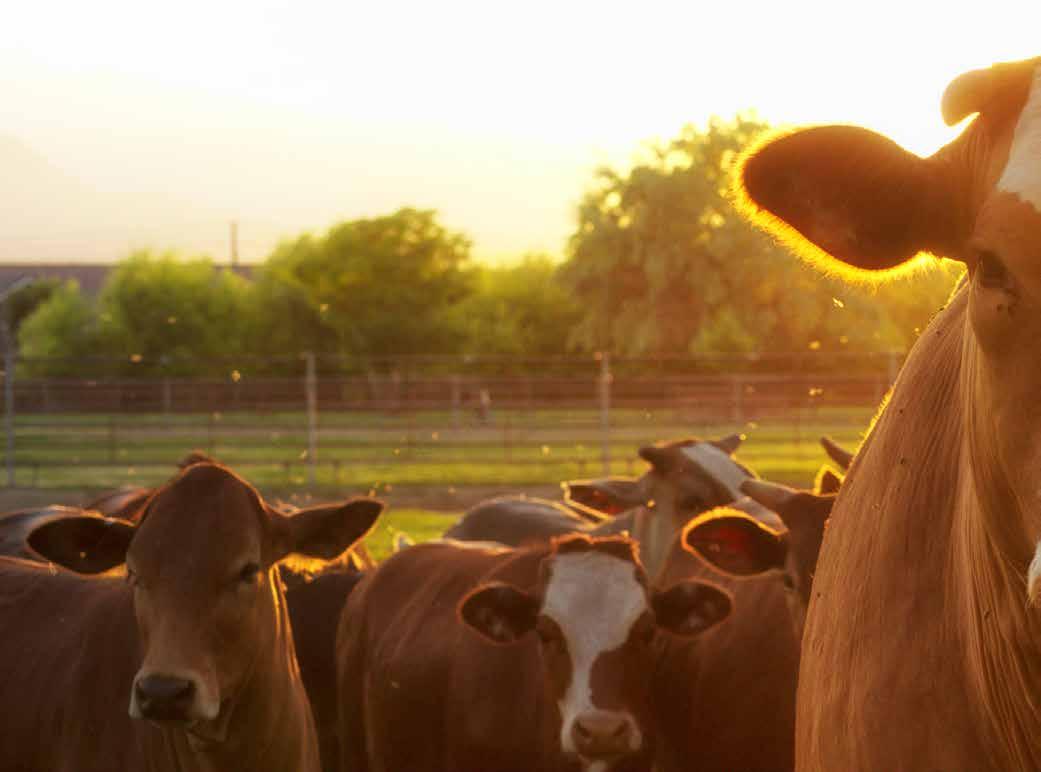
5 minute read
Cattle Industry Outlook
Polk Ranchers Wrestle Development, Rising Costs to Meet Demand
by PAUL CATALA
Advertisement
RREGARDLESS OF THE COMMODITY or industry, farmers and ranchers across the state are all grappling with the same obstacles—development and rising costs. That’s especially true for Florida cattle ranchers.
Kevin Fussell, who is in his second year as president of the Polk County Cattlemen’s Association and its approximately 300 members, says his cattle company, D.R. Fussell Ranch in Polk City, is a “sizable operation” and holding steady – but he’s not sure for how much longer because of development pressures and steep input costs.
As of January 2021, according to the U.S. Department of Agriculture Southern Region, Polk County had about 92,000 head of cattle. By January 2022, that had decreased to 89,000. According to the USDA inventory, cattle and calves in the U.S. as of January 2023, totaled 89.3 million head, down 3 percent from 92.1 million the previous year. The Florida cattle and calves inventory decreased 1 percent from the previous year to 1.62 million head.
Bridget Stice, the UF/IFAS livestock extension agent in Polk County, says county estimates for cattle are released in May each year, so figures for 2023 aren’t yet available.
Fussell, 38, a Lakeland native raised in Polk City, says 2022 and the first few months of 2023 have been tough for cattle ranchers, particularly in regard to finding places to raise cattle. He says the prices he’s been getting for his calves in the past few months have gone up slightly but not enough to keep up with what it costs to raise them.
Annual inflation is at about 6%, down from 8.3% in May 2022, but continued supply chain interruptions along with input costs such as feed, fertilizer, fuel and labor are eating into overall returns for cattlemen.
“Inflation is hurting us, too. Fertilizer was $220 a ton in 2021, now more than $600 a ton, due mostly to fuel prices, and so freight costs have gone up,” he says. “That’s the case with any ag business right now, input costs are just so high. We’re all handling a lot of money, but it’s all going out.”
— Wes Carlton, president, Florida Cattlemen’s Association
The Florida Beef Council reports there are more than 886,000 head of cattle and 15,000 beef producers throughout Florida. Currently, the state is 13th in overall cattle numbers nationwide. The five top ranking counties for cattle are Okeechobee, Highlands, Osceola, Polk, and Hardee counties. Cash receipts from cattle and calf sales totaled more than $546 million.
Like Fussell, Wes Carlton, Florida Cattlemen’s Association president, says the past few years have been rough for Florida’s cattle ranchers, including those among the association’s approximately 5,500 members statewide. He runs Spur Land and Cattle, a Fort Pierce-based family operation spanning three counties, and echoes Fussell’s sentiments on the recent rates of high ranchland conversion as a reason for slight cattle number decreases. He also says rising interest rates and higher supply-input costs have been hindering the industry throughout 2022 and into 2023.
“I think the writing is on the wall, too many people and lots of development,” he says. “Demand stays high but farmers’ inputs have gone up; fuel, energy, labor, insurance — all of those things add up,” he says. When you factor in transportation issues and supply chain interruptions from Covid, everything backs up.
“It’s gotten better, but still the input costs are high, and that goes for all of them — whatever it is, it costs more,” says Carlton.
Even if development slows due to the economy, and homes or shops won’t be built for another 20 years, large developers have already purchased the land. Carlton says he hopes there will be a more formidable push for environmental easements so the land can be protected and “stay in food production and available for habitat and wildlife corridors.”
Stice also agrees that the continued development is hampering the Florida cattle industry.
“The demands that we have on land values are so high, all the challenges on ranchers, coupled with economic challenges, are why we were losing numbers,” she says.
Nonetheless, Carlton says that while the Florida cattle industry outlook doesn’t look great, it does look good.
“We’re going to continue to have to have protein, and beef is the cheapest, the best, safest protein out there. From a market standpoint, the markets look good for the next several years. They’ll hit a point when they will lighten up once these lands are saved by environmental easements,” he says.
“The cattle industry has been here for 500 years, and I don’t see a reason why it won’t be here for another 500 years.” ag



